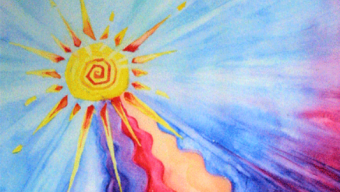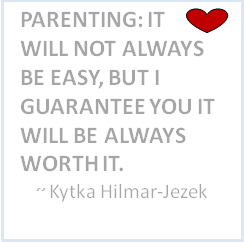A child is not an unfinished adult. She is a person whose state of consciousness allows her to be nearer to the spiritual reality than the adult herself is.
Children, Steiner said, do not grow up – they “grow down”, from head to limbs. And as they grow down physically, they wake up, psychologically, from limbs to head. The new-born baby is all-head; the limbs are more or less appendages. The adolescent, by contrast, often goes through a stage when he seems to be all limbs, before reaching final adult proportions. Yet, waking up proceeds, in a sense, in the opposite direction.
Babies and nursery-age children learn mainly by doing. Not until adolescence, does the individual begin to use his head in an adult way, when he becomes capable of more abstract intellectual operations, as well as sometimes devastating criticism and analysis of his surroundings.
During the all-important middle years, which Steiner placed explicitly between two stages of physical maturation, change of teeth and puberty, the inner and outer growth processes cross, so to speak, in the heart of childhood. The rhythms of pulse and breathing begin to approach the adult’s, movements become more rhythmic and graceful, and the child is, for a while, beautifully balanced until the awkwardness of adolescence begins. At the same time, a…
{+++}
rich inner life of imagination, day-dreams and feeling begins to unfold and everything becomes heartfelt.
For Steiner, this was not a mere idea of speech. He regarded the rhythmic functions of the body, which are embodied most explicitly in the heart and lungs, as the organic basis of our emotional life, as the limbs are the basis for action and the brain for thought.
Consider This:
“Everything that a child experiences in her environment leaves deeper impressions upon her than just memories. The child not only imitates people but also colors, shapes, and qualities of the objects which surround her. These imitation experiences take hold of the organs and form them: the impressions made by images are absorbed into the formative forces and work to develop the body in whose more delicate structure is stamped the “memory” of these experiences. Thus the body preserves childhood experiences as a basis for the spirit-soul development of the human being.”
~Johanna Veronika Picht
“In spite of his energy, this child has himself amazingly under control. He knows what to do and when he is not sure, always ask his parents. I think that there is a very important point in his mother’s achieving this relationship of absolute trust and reliance. His mother includes him in her life ever since he was a baby and talked to him a lot, sharing with him her nice experiences in her daily life. For instance when they took walks, although as a little baby, the child may not have understood her words, she conversed with him anyway and told him about the plants and sunshine etc., and when she went shopping she shared with the little baby: shall we get this, we will make …. etc. If I may say this, the baby feels being embraced by the mother’s speech of love and care, and feels linked to his mother. The mother is also sure of herself that she is giving the best for him. This affects the child and cloths him with a lot of peace and certainty.”
~ Ghamin





















